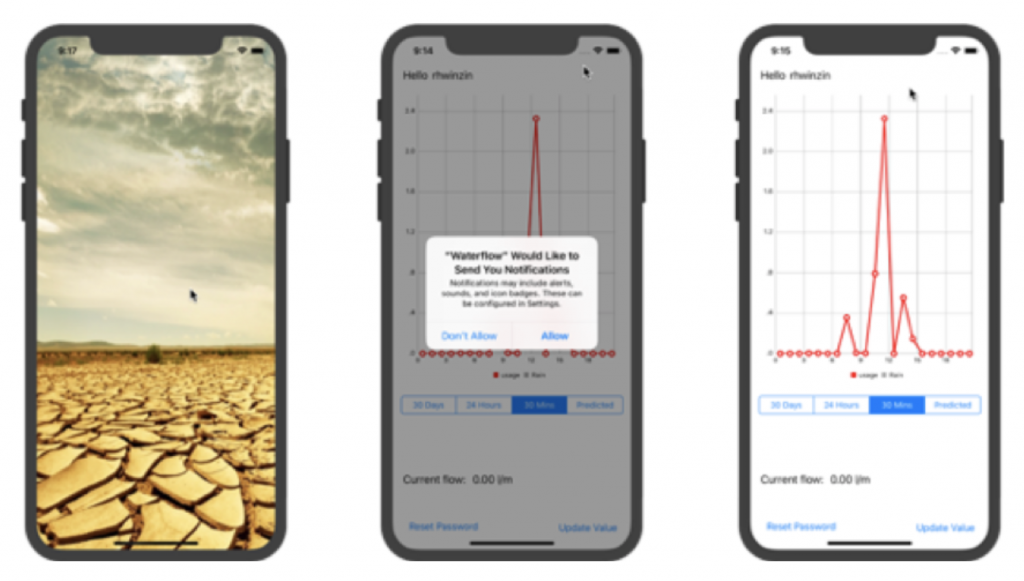The Internet of Things on AWS – Official Blog
Category: AWS IoT Core
Using AWS IoT to Create a Smart Home Water-Monitoring Solution
2018 saw the fourth year of drought and the worst in recorded history for the city of Cape Town, South Africa. “Day zero” was a term coined by the city for the day when they would have to turn the water off for citizens. Fortunately, “day zero” was never realized, and Cape Town didn’t go […]
Automating Security Remediation Using AWS IoT Device Defender
Note: The runtime parameter of Python 2.7 is no longer supported for creating or updating the AWS Lambda functions. We recommend you use a supported runtime while creating or updating functions. An IoT solution requires managing a large number of devices, usually hundreds of thousands or millions. When you start to work at a large […]
Using AWS IoT Services for Asset Condition Monitoring
Note: For latest guidance on asset monitoring, please refer to this blog instead. The Industrial Internet of Things (IIoT) presents an unparalleled opportunity for every industry to address core business challenges, such as reducing downtime, improving safety, increasing system output, reducing operating costs, and creating innovative services and business models. In this blog post, I […]
Get Started with the IoT Foundation Series from AWS Training and Certification
The IoT Foundation Series, a new curriculum dedicated to IoT on AWS, is now available online on the AWS Training and Certification website. This curriculum contains self-directed online training classes that are scenario-based and aligned with the library of IoT design patterns called the IoT Atlas and IoT best practices in AWS whitepapers. This curriculum […]
Provision Devices Globally with AWS IoT
Customers are building globally distributed IoT solutions with AWS IoT. A device that connects to AWS IoT must be provisioned in an AWS Region. However, when devices are shipped globally, you don’t know in which AWS IoT Region the device will connect when it starts operation. In this blog post, I will describe a global […]
Connect your devices to AWS IoT using LoRaWAN
4/15/21 AWS IoT Editorial Team Update: Since the time of this blog post, we have announced AWS IoT Core for LoRaWAN. AWS IoT Core for LoRaWAN is a fully-managed feature that allows you to connect and manage wireless devices that use LoRaWAN connectivity with the AWS Cloud. Using AWS IoT Core for LoRaWAN, enterprises can setup […]
Configuring Cognito User Pools to Communicate with AWS IoT Core
AWS IoT Core supports certificate-based mutual authentication, custom authorizers, and Amazon Cognito Identity as way to authenticate requests to the AWS IoT device gateway. Amazon Cognito User Pools was made generally available last year. It allows customers to easily add user sign up and sign in to mobile and web apps. You can use Cognito […]
Detect anomalies on connected devices using AWS IoT Device Defender
We often see security breaches depicted in media and popular culture. In the HBO series Silicon Valley, a compromised refrigerator is used by hacker Gilfoyle to run a malicious piece of software. The reality of connected devices isn’t very different from this fictitious scenario. The compromised refrigerator can send consumer data to unauthorized endpoints. Connected […]
How AWS IoT Core is Helping Customers Navigate the Upcoming Distrust of Symantec Certificate Authorities
NOTE: This blog post describes important public key infrastructure (PKI) issues related to browser and mobile application connectivity to AWS IoT Core. For information about public key certificates and TLS, see Chain of Trust and Certificate Authorities in High Performance Browser Networking. Overview Google, Apple, and Mozilla have announced that, starting October, 2018, they will […]
How to Implement MQTT with TLS Client Authentication on Port 443 from Client Devices (Python)
Update: AWS IoT Core has simplified the connection process—devices no longer need to implement the Transport Layer Security (TLS) Application Layer Protocol Negotiation (ALPN) extension to determine authentication type and protocol. This means that client devices can connect to AWS IoT Core with MQTT over port 443 without implementing ALPN. For additional details, please refer […]

